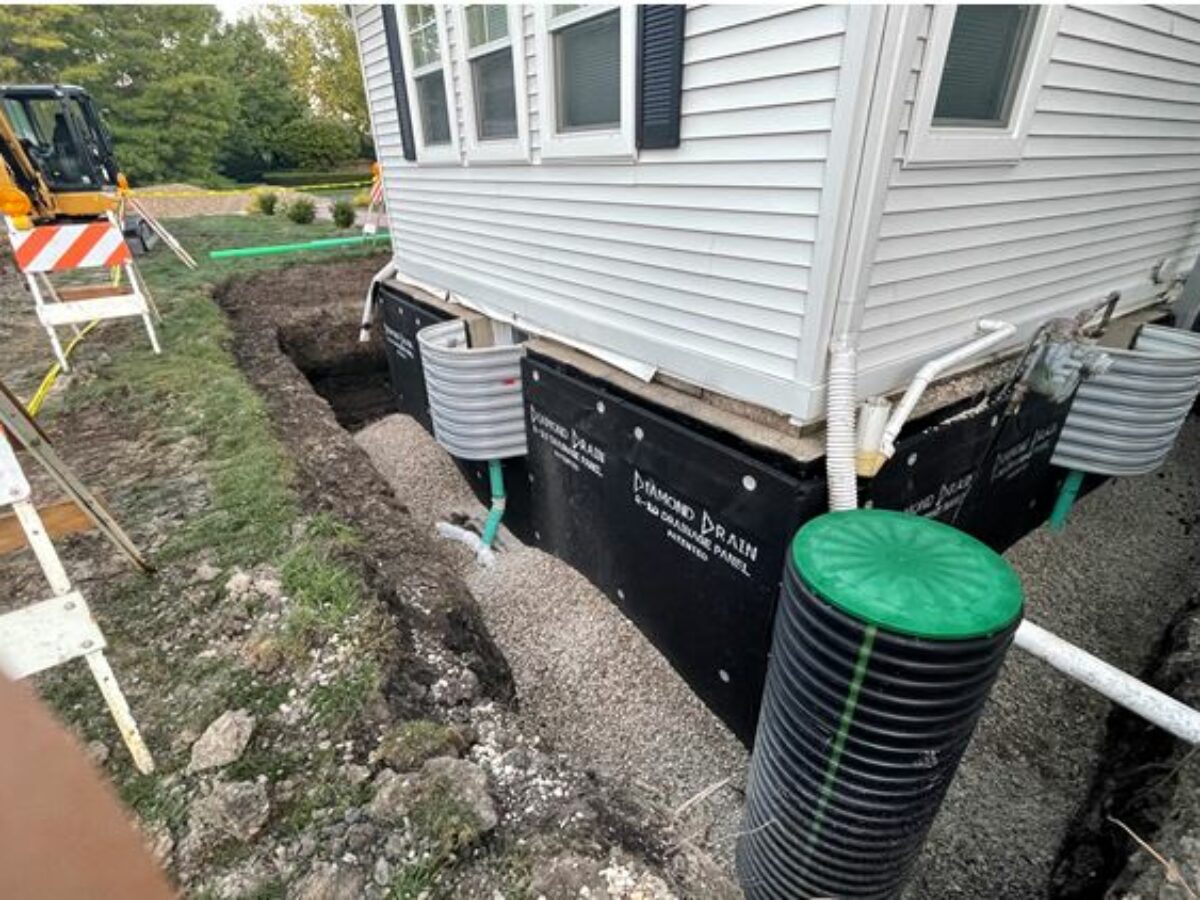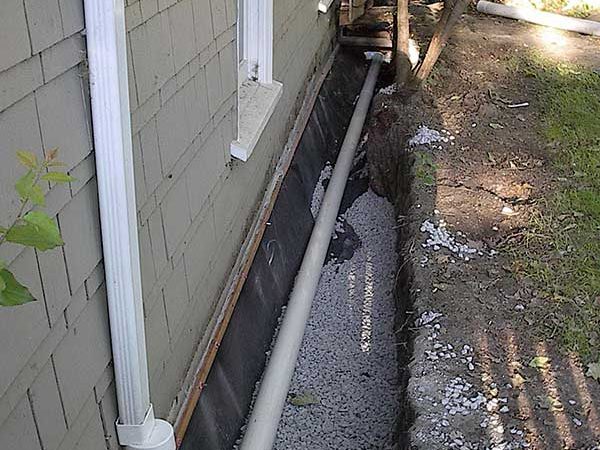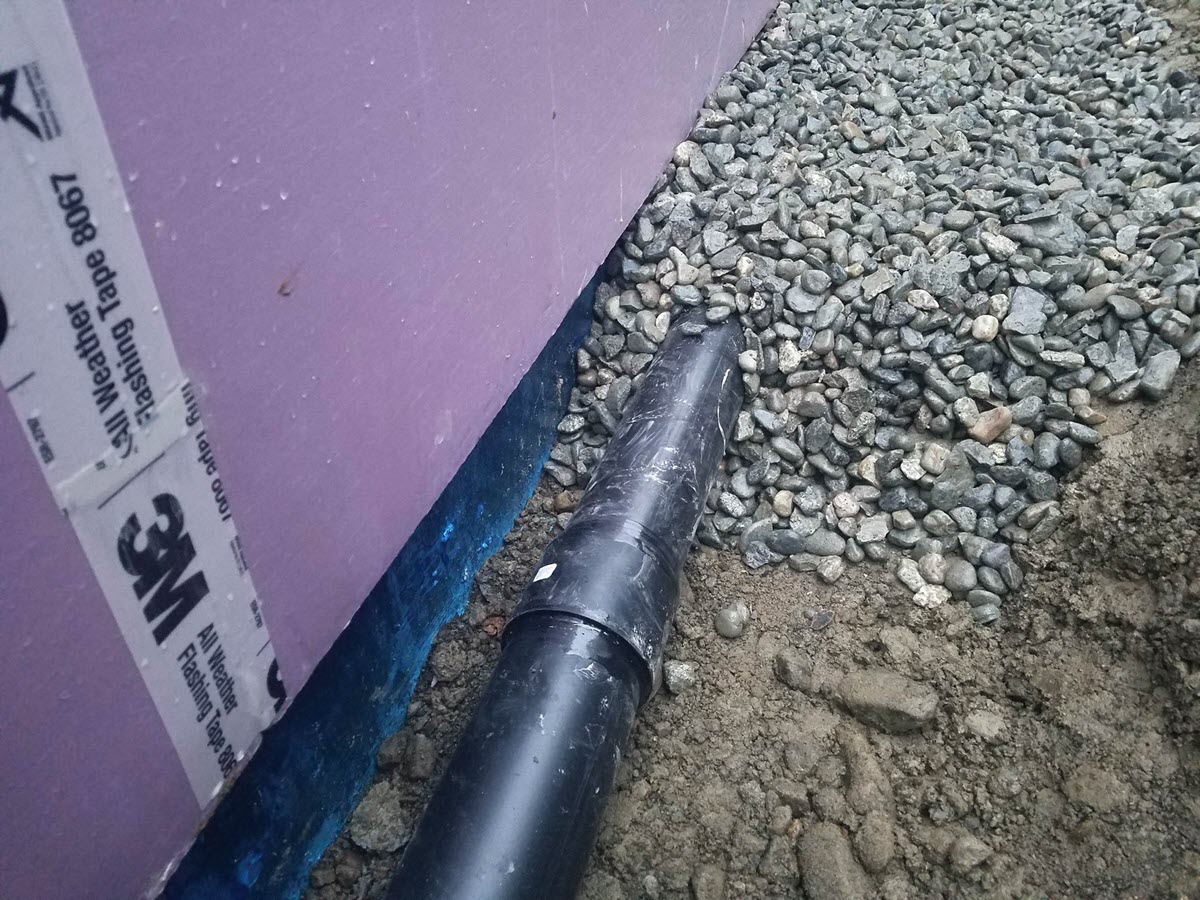Foundation Drain Servicesin Almont MI
Foundation Drain Solutions to Keep Your Building Secure
We Are Locally Owned & Operated For Over 37 Years
Contact Us Today!
We Serve Businesses In And Around The Following Cities:
About Foundation Drain Services
Understanding Foundation Drain in Commercial Properties
Placed in the beautiful city of Almont that bears the rich history and charm of the state, any building demands a strong base to support its structure and functionality. Whether a business hub, a commercial complex, or a residential building, one of the pivotal aspects contributing to its robustness lies underneath – the foundation drain. This guide takes you through the nitty-gritty of installing a foundation drain, the unmatched benefits it brings, and practical examples showcasing its indispensability.
The Process of Installing a Foundation Drain
Foundation drainage systems facilitate the flow of water away from the foundation of a building, safeguarding it from potential damage caused by water stagnation. A commonly effective strategy, especially for commercial properties in Almont, is installing an exterior foundation drain. The installation process broadly involves digging a trench around the building perimeter, placing a perforated drain pipe, and setting up a foundation footer drain. To enhance the performance of this system, one might consider installing a foundation french drain, which serves as an added channel for water drainage.
The presence of a foundation drain around the house foundation ensures that the structural integrity of the building remains intact. However, the procedures require expert handling to ensure precision and effectiveness. For this, one might consider the services of proficient contractors like D&J Contracting, known for their professionalism and efficient task execution.
The Benefits of Foundation Drains
The advantages of having a successfully installed drain system around the foundation are manifold. Its primary function is to drain water away from the house foundation, thereby reducing the chances of water pooling that can compromise the structure’s integrity and longevity. An additional safety measure often employed is a foundation perimeter drain, which works to keep water from reaching the building walls and causing foundation-related problems.
Numerous commercial properties in Almont have witnessed the transformative impact of incorporating foundation drains into their building structure, thanks to the expert services from D&J Contracting. With in-depth knowledge of foundation wall drainage system and foundation water drainage system, they have helped businesses maximize the durability and safety of their properties.
Real-World Applications of a Foundation Drain
A classic real-life example showcasing the relevance of a foundation drain comes from the commercial complexes in Almont dealing with water stagnation issues. The perpetual presence of water in basements led to mildew growth, damaging the property extensively. The drainage system around the foundation, provided by the efficient team of D&J Contracting, not only resolved the water stagnation issue but also prevented potential water damage, extending the building’s life.
Another instance pertains to an office building in Almont. The building suffered from an ineffective drain system that resulted in bowed walls and a cracking foundation. With the installation of a well-strategized drainage near the foundation, the situation was addressed, ensuring the employees’ safety and preserving the building’s structural integrity.
The Takeaway
In the context of commercial establishments where hundreds of employees work and numerous clients visit daily, the foundation’s stability becomes indisputably crucial. As this guide underscores, a competent foundation drain system acts as an essential prop to maintain this stability.
Almont, with its unique environmental factors, requires proficient and experienced contractors for this task. D&J Contracting features as a reliable partner in providing substantial foundation drain solutions, tailored to the city’s specifics. Their competent foundation drainage systems not only ensure a robust structure for commercial buildings but also contribute to a secure and long-lasting business environment.
Remember, maintaining structural integrity should be a priority. That means investing in proven solutions like foundation drains and relying on competent service providers like D&J Contracting is a wise decision for any commercial enterprise. It’s time to take action and make that necessary investment in your commercial property’s foundation today.
Foundation Drain Services Gallery


Call Us Today to receive your Free Quote for
Foundation Drain in Almont
Serving: Almont, Michigan

About Almont, Michigan
Almont was first settled in 1828 by James Deneen. It received a post office in 1835 named Bristol, for Oliver Bristol, the second permanent settler. The village was platted as Newburg in 1836, and renamed Almont in 1846.
According to HildaMae Bowman’s “Almont, The Tale of Then and Now,” Almont’s name was changed in 1845 to honor the Mexican general, Juan Almonte.
According to the United States Census Bureau, the village has a total area of 1.42 square miles (3.68 km), all land. The village center of Almont is located at the intersection of M-53 (also known as Van Dyke) and St. Clair Street. To the east, St. Clair is known as Almont Road, and to the west it is known as General Squire Road. In addition, this is also sometimes deemed as “40 Mile Road”, although the nearby ascending “mile roads” officially end at “37 Mile Road”. Nearby towns include Bruce Township and Romeo to the south; Dryden to the northwest; Imlay City to the north; and Allenton to the east, and Capac to the northeast. Almont is approximately 40 miles (64 km) north of Detroit.
| Census | Pop. | Note | %± |
|---|---|---|---|
| 1880 | 837 | — | |
| 1890 | 717 | −14.3% | |
| 1900 | 718 | 0.1% | |
| 1910 | 675 | −6.0% | |
| 1920 | 789 | 16.9% | |
| 1930 | 844 | 7.0% | |
| 1940 | 924 | 9.5% | |
| 1950 | 1,035 | 12.0% | |
| 1960 | 1,279 | 23.6% | |
| 1970 | 1,634 | 27.8% | |
| 1980 | 1,857 | 13.6% | |
| 1990 | 2,354 | 26.8% | |
| 2000 | 2,803 | 19.1% | |
| 2010 | 2,674 | −4.6% | |
| 2020 | 2,846 | 6.4% | |
| U.S. Decennial Census | |||
As of the census of 2010, there were 2,674 people, 1,030 households, and 728 families living in the village. The population density was 1,883.1 inhabitants per square mile (727.1/km). There were 1,116 housing units at an average density of 785.9 per square mile (303.4/km). The racial makeup of the village was 93.1% White, 0.3% African American, 0.3% Native American, 0.2% Asian, 4.9% from other races, and 1.1% from two or more races. Hispanic or Latino of any race were 7.4% of the population.
There were 1,030 households, of which 37.3% had children under the age of 18 living with them, 50.6% were married couples living together, 13.7% had a female householder with no husband present, 6.4% had a male householder with no wife present, and 29.3% were non-families. 25.9% of all households were made up of individuals, and 10.1% had someone living alone who was 65 years of age or older. The average household size was 2.60 and the average family size was 3.11.
The median age in the village was 37.2 years. 26.9% of residents were under the age of 18; 8.1% were between the ages of 18 and 24; 26.9% were from 25 to 44; 26.7% were from 45 to 64; and 11.4% were 65 years of age or older. The gender makeup of the village was 50.2% male and 49.8% female.
As of the census of 2000, there were 2,803 people, 1,022 households, and 747 families living in the village. The population density was 1,857.2 inhabitants per square mile (717.1/km). There were 1,058 housing units at an average density of 701.0 per square mile (270.7/km). The racial makeup of the village was 95.54% White, 0.32% African American, 0.54% Native American, 0.36% Asian, 2.32% from other races, and 0.93% from two or more races. Hispanic or Latino of any race were 4.14% of the population.
There were 1,022 households, out of which 39.9% had children under the age of 18 living with them, 58.6% were married couples living together, 11.0% had a female householder with no husband present, 26.9% were non-families. 23.0% of all households were made up of individuals, and 8.9% had someone living alone who was 65 years of age or older. The average household size was 2.73 and the average family size was 3.24.
In the village, the population was spread out, with 30.3% under the age of 18, 7.0% from 18 to 24, 33.7% from 25 to 44, 19.7% from 45 to 64, and 9.2% who were 65 years of age or older. The median age was 33 years. For every 100 females, there were 90.9 males. For every 100 females age 18 and over, there were 87.3 males.
The median income for a household in the village was $53,984, and the median income for a family was $63,261. Males had a median income of $50,644 versus $26,667 for females. The per capita income for the village was $21,252. About 4.2% of families and 5.6% of the population were below the poverty line, including 5.8% of those under age 18 and 8.2% of those age 65 or over.
Almont is a home rule village with a manager-council form of government. Per its charter the village charter provides for seven councilors elected. Four councilors are up for election every two years, with the top three vote-getters serve three terms while the fourth highest serves two year terms. The president and president pro tempore are selected from its members by the council. A village manager is appointed by the council.
The village is served by specialized governmental units, the Almont Community Schools and the Almont District Library.
Call Us Today to receive your Free Quote for
Foundation Drain in Almont
Related Services in Almont, Michigan
We Serve Businesses In The Following Zip Codes:
48007, 48015, 48021, 48026, 48035, 48036, 48038, 48042, 48043, 48044, 48045, 48046, 48047, 48048, 48050, 48051, 48066, 48071, 48080, 48081, 48082, 48083, 48084, 48085, 48088, 48089, 48090, 48091, 48092, 48093, 48098, 48099, 48225, 48230, 48236, 48310, 48311, 48312, 48313, 48314, 48315, 48316, 48317, 48318, 48397